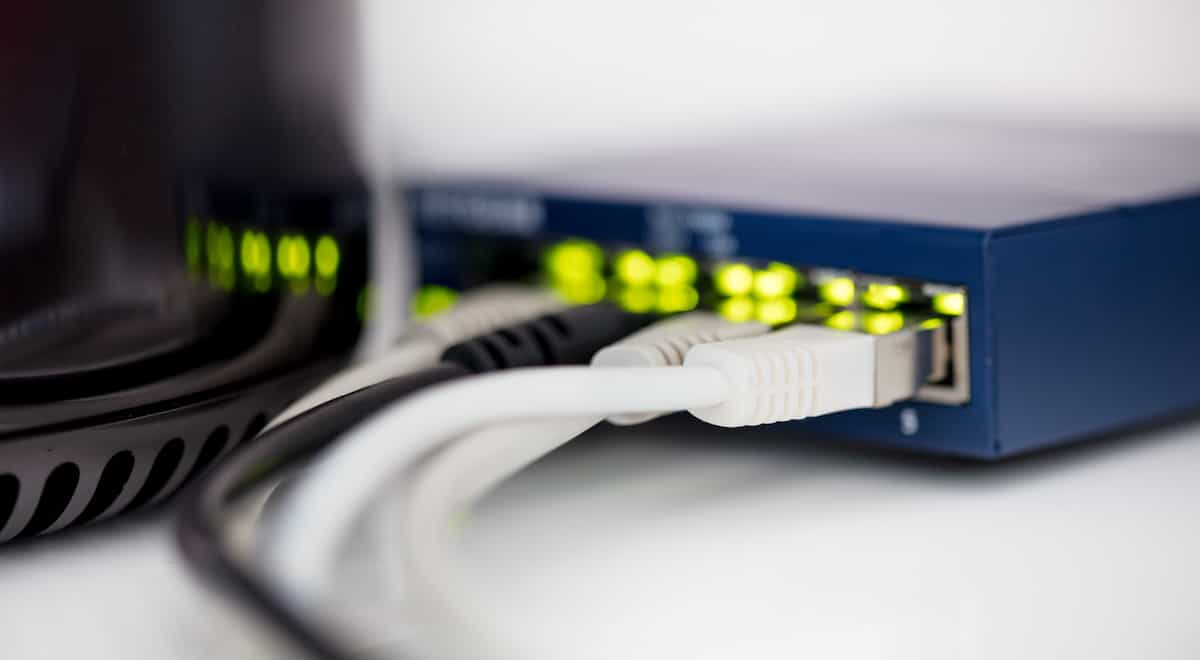What is fibre optics?
Optical fibre is a data transmission technology that uses light to transport digital information from one point to another.
It works by sending light signals through thin, transparent glass or plastic wires, which are insulated to prevent light scattering. This makes fibre optics much faster and more reliable than other data transmission technologies such as ADSL, which uses existing telephone lines to transmit data.
In addition, fibre optics can transport large amounts of data at very high speeds, making it ideal for applications that require very high bandwidth, such as high-definition video streaming and business communications.
Technology and benefits

Optical Fibre technology offers a number of advantages over ADSL. With fibre optics, the transmission speed is much higher. In fact, download speeds are up to 1 Gbps, while upload speeds are up to 200 Mbps. Furthermore, it guarantees a more stable connection, where an ADSL connection can be slowed down by various external factors.
Furthermore, latency is lower: it is often less than 10 ms, whereas with an ADSL connection it can be up to 40 ms. This means that a broadband connection over fibre optics is faster when loading web pages, downloading files and watching streaming videos.
Type of offers
Various fibre-optic service offers are available today. Bandwidth, service packages and tariffs depend on the operator. For example, some providers offer fibre-only services, others combine radio and fibre, while still others prefer wired connections.
It is important to carefully evaluate the Internet offers available on the market before activating a line. For example, you can choose between wired connections, with the convenience of fast and reliable service, or a wireless connection, with the advantage of being cheaper.
In addition, some providers also offer packages with additional content such as telephony services, streaming services, domain registration options and so on.
How to activate a fibre optic internet line
Activating a fibre optic internet line is really simple. First, make sure you have the necessary requirements: connection cables, switchboard and a signed contract with your operator. Also make sure you have all the documents required by the operator, such as passport, identity card or address.
Once you are sure you have all the necessary requirements, the steps to activate your connection to the fibre optic service will be:
- Check the network cables to ensure that they are plugged in and securely connected to the modem/router.
- Connect the modem / router to the switchboard and ensure that the connections are secure.
- Insert the inserted SIM card into the modem (where and if applicable).
- Load the driver required for the initial configuration of the modem / router.
- Enter the contract data, such as activation, username/password, etc.
- Check that the connection has been activated.
Once you have followed these simple steps, the fibre-optic connection will be active and functioning as expected.
You may also like
Fibre optics: what is fibre optics for business?
Fibre optics is one of the best options available for setting up a corporate Internet network, as it can ensure a high connection speed and, at the same time, signal stability and highly reliable performance. Fibre optic cables are incredibly resilient and durable, providing remarkable resistance to adverse weather conditions and signal stability that is… Continue reading Fibre optics: what is fibre optics for business?
Guide to activating an Internet line
ADSL Internet Line ADSL (Asymmetric Digital Subscriber Line) is an iconic Internet connection technology and is the main residential form of Internet access. The main advantage of ADSL is the high bandwidth it provides compared to other less expensive options such as dial-up modem, cable or fibre optics. The main disadvantage of ADSL is that… Continue reading Guide to activating an Internet line
Innovative Solar Panels for Residential and Commercial Use
Solar technology has advanced significantly, making it more efficient and affordable for residential and commercial applications. Here are some of the most innovative solar panel models currently available: 1. Bifacial Solar Panels Bifacial solar panels are unique because they can capture sunlight on both sides. This increases their energy production by up to 30% compared… Continue reading Innovative Solar Panels for Residential and Commercial Use
Heat Pumps: Advantages and Disadvantages
Heat pumps are increasingly popular as an energy-efficient way to heat homes, but like any heating system, they come with pros and cons. Advantages Disadvantages In conclusion, while heat pumps offer substantial energy savings and environmental benefits, their high upfront cost and performance in cold climates should be carefully considered before making a purchase.
Electricity and Gas Supply for Commercial Businesses and Restaurants
Energy supply is a critical aspect of running a successful commercial business or restaurant. Electricity and gas power everything from kitchen appliances and lighting to heating and air conditioning. Choosing the right energy supply options can significantly impact operational costs, efficiency, and sustainability. This article will explore the key considerations for electricity and gas supply… Continue reading Electricity and Gas Supply for Commercial Businesses and Restaurants
Energy Supply for Businesses: Gas and Electricity Options
Energy supply is a critical component of running any business, regardless of size or industry. The choice of gas and electricity providers can significantly impact operational costs, efficiency, and even environmental footprint. This article will explore the different types of energy supply options available for businesses and outline the steps required for new activations or… Continue reading Energy Supply for Businesses: Gas and Electricity Options
